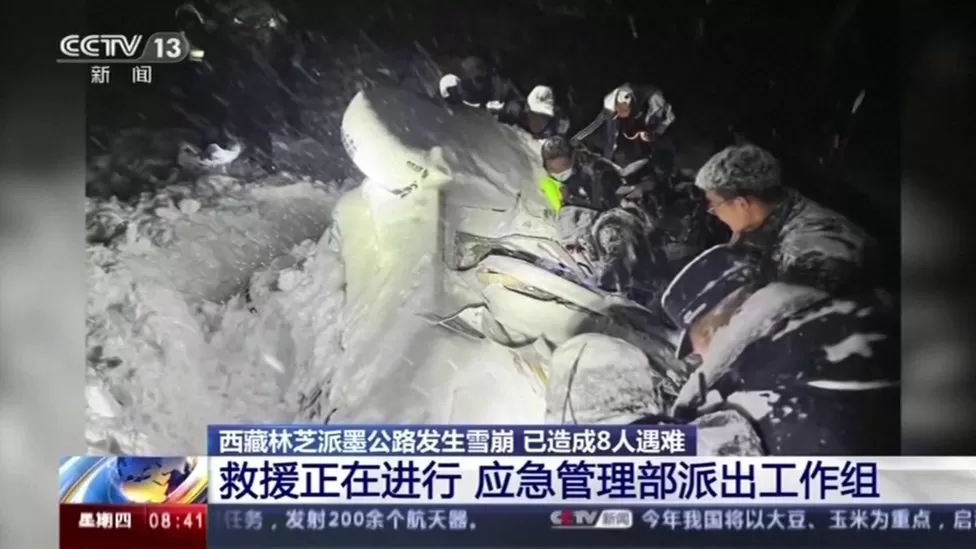At least eight people have been killed in an avalanche that struck a tunnel exit near the south-eastern Tibetan city of Nyingchi on Tuesday night. Many cars were overturned by the avalanche, which left the road covered in snow, a local resident who joined the rescue effort told local media. Tibet avalanche kills at least eight people on highway.
It is unclear how many people are missing. Hundreds of rescuers and 30 large machines are searching the scene. Avalanches happen frequently in the mountainous region. The avalanche happened on a highway connecting the town of Pai in Mainling county and Medog county in Tibet, a remote and mainly Buddhist region in western China.
One woman told local media outlet Hongxin News that her husband was missing after the accident. He had been on his way to the airport to fly home to celebrate Lunar New Year together. With an average elevation of about 3,100m above sea level, Nyingchi is a popular travel destination.
In October, at least 26 people were killed in an avalanche on Mount Draupadi ka Danda in northern India during a mountaineering expedition.
Avalanches can be set off spontaneously, by such factors as increased precipitation or snowpack weakening, or by external means such as humans, animals, and earthquakes. Primarily composed of flowing snow and air, large avalanches have the capability to capture and move ice, rocks, and trees.
Avalanches occur in two general forms, or combinations thereof: slab avalanches made of tightly packed snow, triggered by a collapse of an underlying weak snow layer, and loose snow avalanches made of looser snow. After being set off, avalanches usually accelerate rapidly and grow in mass and volume as they capture more snow. If an avalanche moves fast enough, some of the snow may mix with the air, forming a powder snow avalanche.
